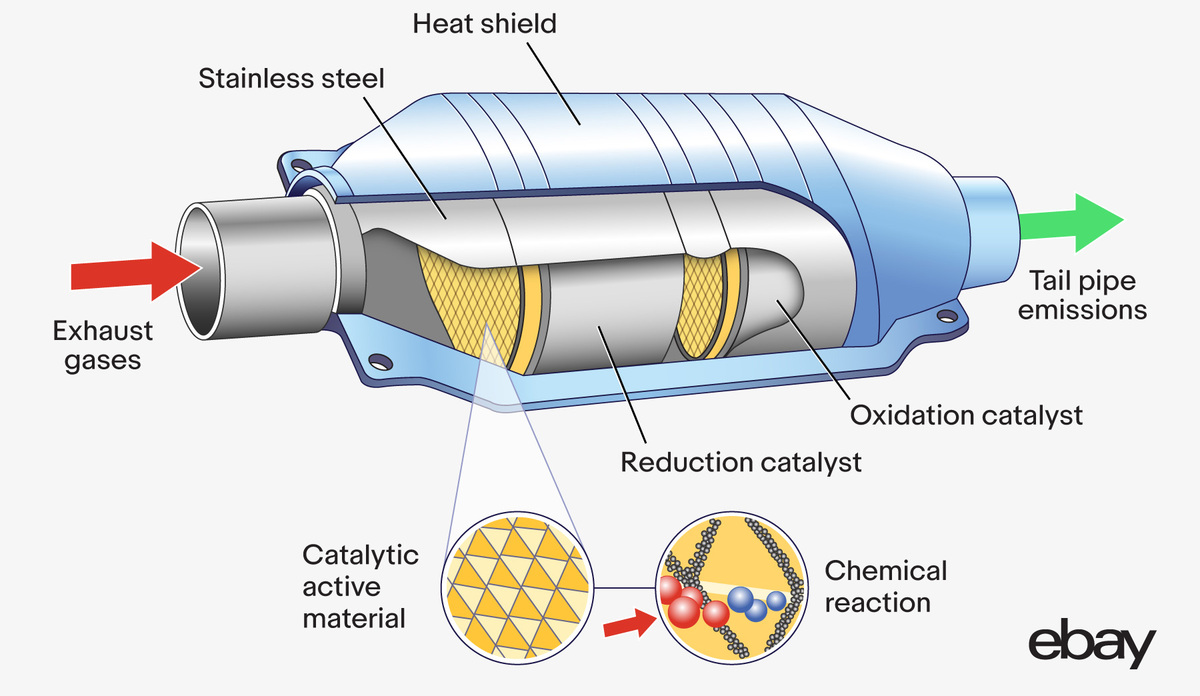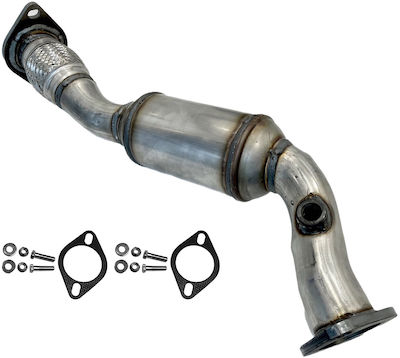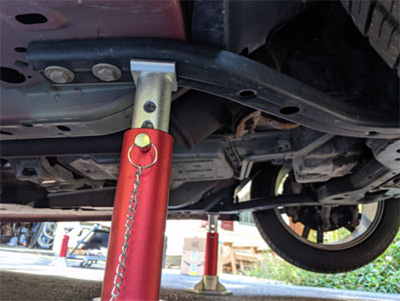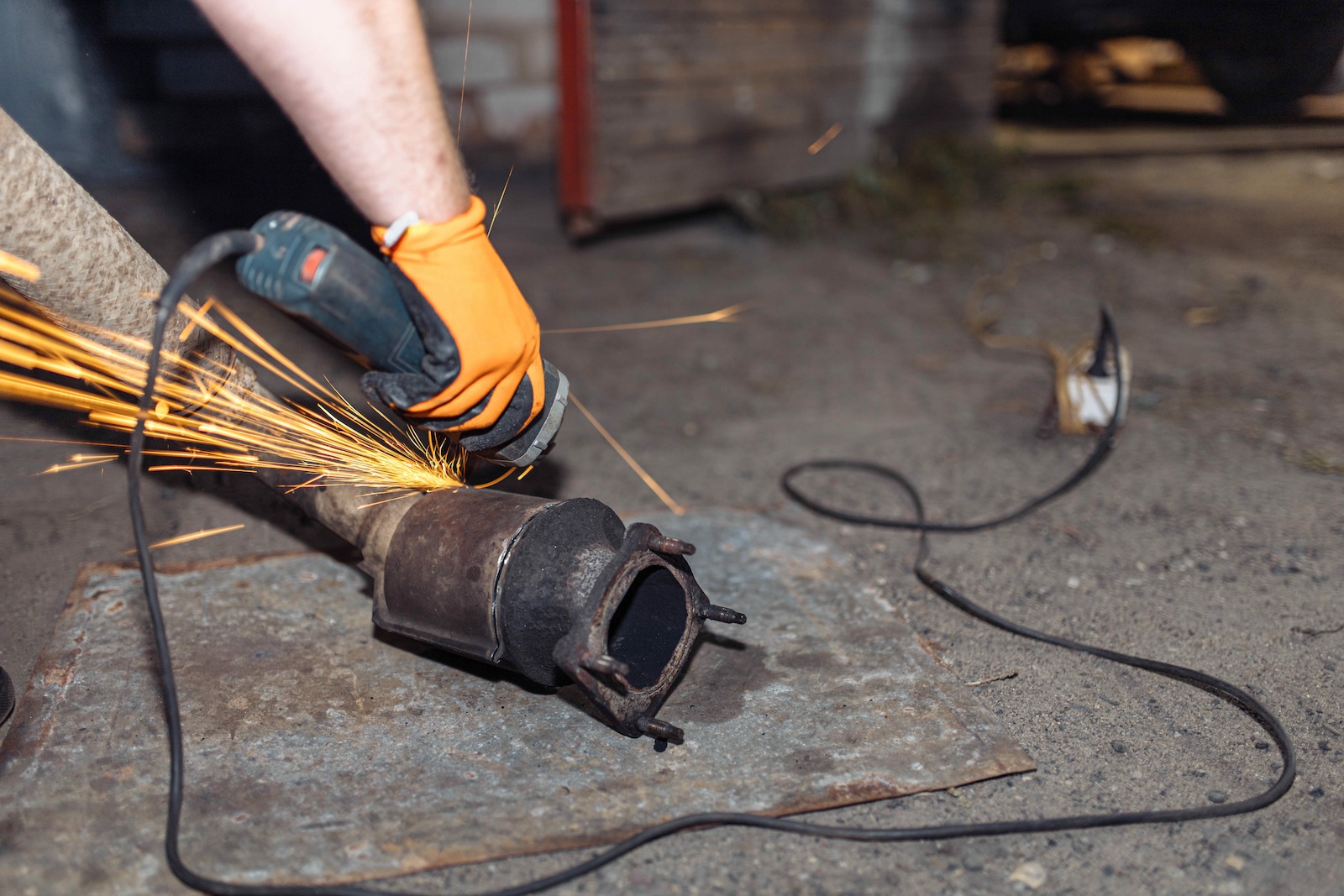Contents
In addition to the cost of a replacement converter, users may need to pay over $1,000 to repair the damage the thief caused while stealing the converter.
With all this news, you may be wondering why you need a catalytic converter in the first place.
Read this: Protect Your Catalytic Converter with a Shield or Lock
What Is a Catalytic Converter?
A catalytic converter is an exhaust control device that changes the engine’s toxic exhaust gasses into less toxic gasses. It is situated under the car along the path of the exhaust piping as close to the engine as possible. In case you need a reminder from science class, a catalyst is a substance that chemically reacts with another substance to modify it. The catalyst itself doesn’t change in the process.
As the hot exhaust gasses pass through the catalyst inside the converter, they pass over metallic compounds that react with the toxic fumes to create a chemical reaction. This change makes the gasses flowing out of the converter less harmful.
To comply with clean air standards, all vehicles made since 1975 must have a catalytic converter. Since the lead in gasoline would foul these converters, automotive fuel is now lead-free.
The catalytic converter contains a substrate, or base, usually shaped like a honeycomb, to maximize the surface area that gasses pass through. The substrate contains precious metals like platinum, rhodium, and palladium. These metals facilitate the chemical reaction. Thieves covet platinum, rhodium, and palladium because they can be sold for good money.
Catalytic Converter Types
After 1970, most cars came with a two-way catalytic converter. This style converts carbon monoxide to less dangerous carbon dioxide. It also oxidizes unburned hydrocarbons into carbon dioxide and water. Later, manufacturers added a three-way converter with air, but these were inefficient and required extra mechanical equipment, including an air pump.
In 1981, the manufacturers changed to three-way catalytic converters. In addition to the usual two chemical reactions, these new converters reduce nitrogen oxides to nitrogen and oxygen, making for even cleaner emissions.
Most aftermarket catalytic converters use ceramic materials or stainless steel. The stainless steel converters are more durable and require less heat to be effective. Converters made with ceramics generally do not last a long time, but they treat the gasses the same way as steel units. Ceramic converters tend to be less expensive.
Most aftermarket companies produce two designs for catalytic converters:
- A universal converter is a one-size-fits-most style. As long as the inlet and outlet tubes are the same diameters as your original, most shops can fit and weld them into place.
- A direct-fit converter is specifically designed for your particular make and model of car. They are shaped and engineered to fit the exact location as the original and can easily be installed, often with simple hand tools. These typically cost more upfront but save you in labor costs.
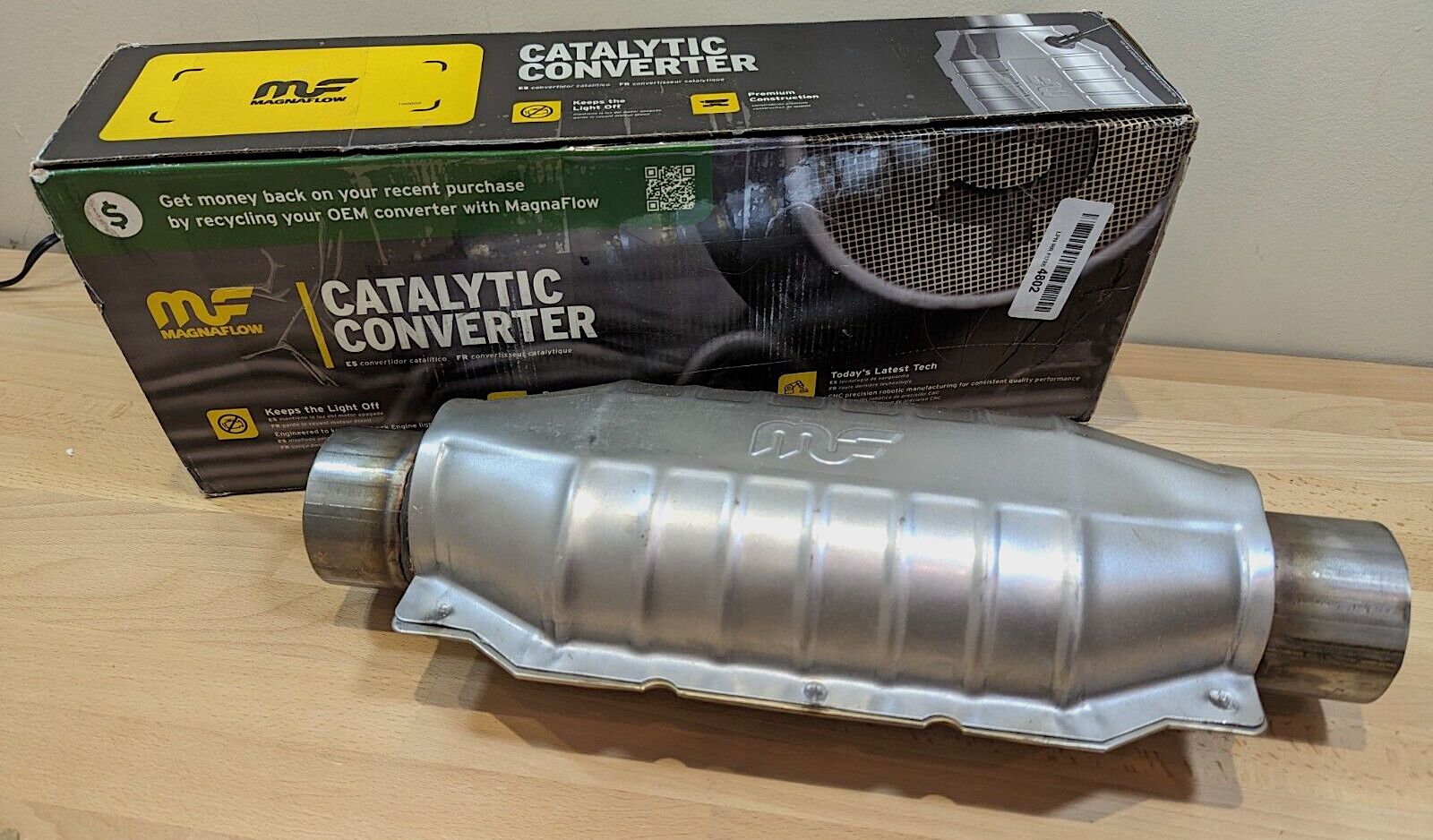
Magnaflow universal fit catalytic converter
And for any model car or truck, there are two standards, depending on where you live:
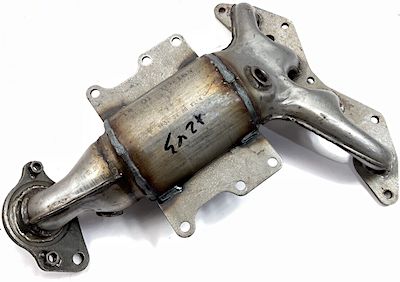
Some vehicles use an integrated direct-fit design, with the converter welded to the exhaust manifold. This is an EPA-compliant Magnaflow unit for 2001-2005 Honda Civics.
- EPA compliant – These converters meet federal mandates, and many states allow them to be installed as replacements.
- CARB compliant – A stricter emission standard has been issued by the California Air Resources Board (CARB). Three additional states (New York, Colorado, and Maine) have adopted CARB mandates, depending on the vehicle’s year.
If you buy and install the wrong converter, a state inspection could later invalidate the car and require the correct converter to be installed. Be sure which style of converter you need before ordering.
How to Install a Catalytic Converter
If your catalytic converter fails, it should be easy to replace. Many converters bolt in place using flanges. A flange is a diamond- or triangular-shaped piece of metal that bolts to a similar piece, allowing the exhaust gasses to pass through.
If the converter was stolen, the thief probably cut the flanges off and might have damaged other components, so check carefully before proceeding. But if the converter was welded in place, you still have options.
Replacing a Converter Using Flanges
- Secure your vehicle up on jack stands. Use a pair of safety goggles when working under the car.
- Spray the bolts holding the converter to the flanges with WD-40 or other penetrating fluid to help loosen the bolts.
- Slightly loosen all the bolts. Then, support the converter with a block of wood or other object and remove the bolts completely. The converter should now come out of the exhaust system.
- Use a wire brush to remove any gasket material or debris around the flanges.
- Test fit the new converter and partially install the bolts onto the flanges. If the unit comes with gaskets for the flanges, use them. Ensure that you’ve placed the converter in the correct direction. The inlet side should connect from the engine, and the outlet should connect to the muffler. There is often an arrow on the catalytic converter to indicate the flow of gasses.
- With everything lined up, tighten the bolts completely.
- If the converter had any brackets or supports that hold the unit in place, reconnect those brackets.
Replacing a Converter That Was Welded In Place
These converters must be cut out to replace a unit.
- Secure your vehicle up on jack stands. Use a pair of safety goggles when working under the car.
- Using a cut-off wheel, reciprocating saw, or exhaust tube cutter, cut the tubing as close as possible to the catalytic converter.
- Remove any burrs or metal fragments from the tubing with a file.
- Test fit the new converter.
- If you have access to a welder, you can weld the new converter into place.
- If you do not have access to a welder, use an exhaust coupler to connect the two pieces of tubing.
- If the converter had any brackets or supports to hold the unit in place, reconnect those brackets.
Theft of Catalytic Converters
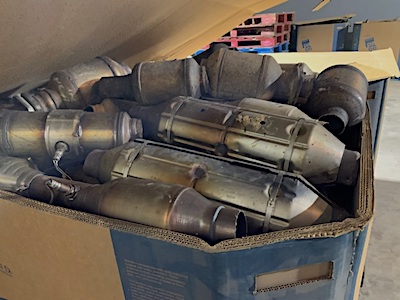
Most converters contain less than 15 grams of precious metals. Depending on the converter model, the thief may receive up to $500 for their stolen converter. Fortunately, there are several ways to protect your catalytic converter from theft.
Shop now for catalytic converters

